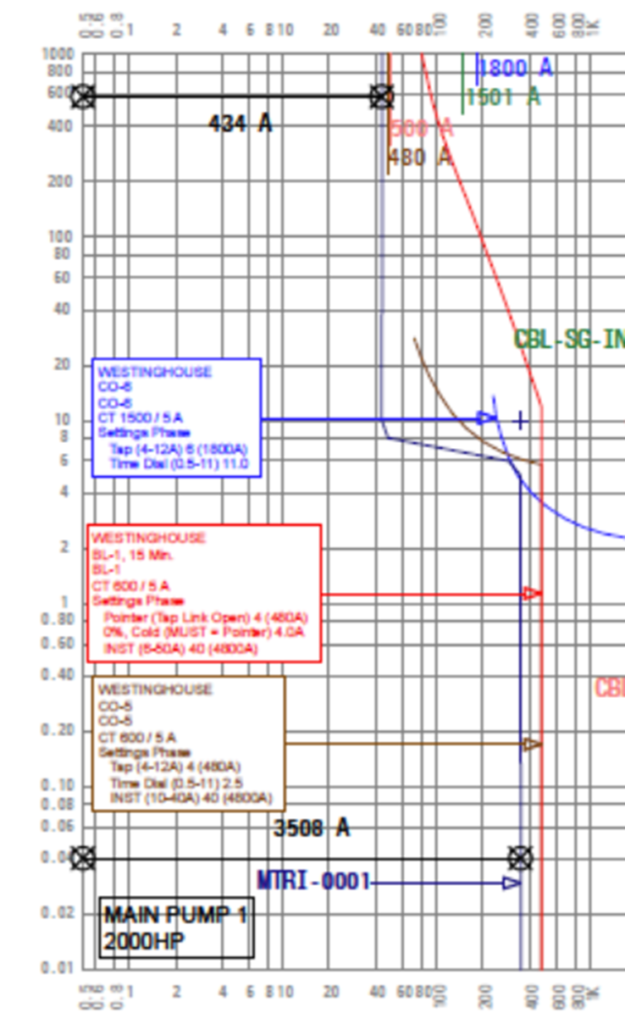By Ray Urbanic, P.E., VP of Engineering
Industry retirements and maintenance department budget cuts often result in lost knowledge and documentation gaps that can be difficult to replace. Electrical department managers and employees can find themselves lacking the history and background needed to understand the critical systems that keep production moving. People often overlook the electrical distribution system until the lights go out and production comes to a standstill. When that happens, system drawings and operational plans are critical to recovery. Below is a handy checklist of information everyone should have to properly maintain an electrical system, and can help expose where the gaps are and how to best fill them.

1- System One-Line Overview

- Is there a set of one-line or electrical drawings of the facility?
- Do they show the utility feed(s) into the facility?
- Does it show all electrical distribution equipment 480V and above?
- Have there been any equipment additions these one-line drawings do not reflect?
If the answer to any of these questions is “No,” this is information you will need to add. Alternate references could include manufacturer drawings of electrical equipment, contractor drawings of recent equipment additions, and arc flash study reports. A proper arc flash assessment should include a one-line of the entire facility that was computer-modeled to provide the arc flash results. If you haven’t conducted one, companies are available for hire to assist with data collection throughout the facility, enabling them to provide an arc flash assessment and a complete one-line diagram of the facility.

2- Electrical Coordination Records
- Do you have the results of a Coordination Study that show your current protective trip curves and settings?
- Do you have records of all fuses used within the plant, with spares available for critical circuits?
- Do you have maintenance records on all protective relay testing, with manufacturer labels signifying when last tested?
A proper Arc Flash Assessment should include a comprehensive Coordination Study, complete with all relay settings and fuse trip curves within the equipment. Start by examining this information first. If the arc flash assessment does not include this information or is significantly out of date, it would be a worthwhile investment to have one performed as quickly as possible in order to gain this type of information needed to simply maintain the production equipment. In addition, you must maintain all protective relays within a 3-5 year cycle to ensure proper operation and comply with NFPA 70E regarding required Personal Protective Equipment (PPE) for arc faults.
3- Equipment Tagging and Record Keeping

- Is all electrical distribution equipment physically identifiable from the one-lines?
- Are there sufficient tags or labels on the gear that correspond to the electrical drawings?
- Does all electrical equipment have an arc flash label? One that warns users of the required PPE needed when exposed to energized parts?
- Do all maintenance records reference the same equipment identification method?
- Is there a central storing location for all equipment records?
- Drawings, service records, maintenance records?
- Can this documentation be accessible electronically?
Having a consistent method for identifying equipment, both physically and on various forms of documentation, aids tremendously in creating a reviewable history of your electrical system, and scheduling work going forward. Enabling this documentation to convert into electronic format is even more helpful.
4- Operational Procedures
- Are there documented procedures for safely performing maintenance on each piece of electrical equipment?
- Lock-out/Tag-out procedures
- Equipment Manufacturer Recommendations
- Annual equipment maintenance schedules
- Are there documented procedures for transferring power from one electrical bus to another?
- Sequence of operation for electrical transfer of power
- Load-shedding at peak usage (to avoid utility penalties)?
- Are there records of all employee training with regards to operational procedures, arc flash (required by NFPA 70E and NESC), etc?
Having documented procedures, and regular training intervals on those procedures, enables users to perform consistent work across multiple shifts and personnel, and keeps safety the high priority it should have within the work environment.

Establishing a solid understanding and documentation for your plant is critical to your ability to operate and maintain the electrical distribution system safely and efficiently. Possessing accurate and detailed documentation is not always a given but can be established. All it takes is a methodical approach to researching your system, dusting off your resources, and calling for help when you need it.
Southwest Electric Co. is here to assist you with all your transformer, switchgear, motor, arc flash, and electrical distribution system needs. Our highly skilled and trained technicians and in-house engineers can help you understand and maintain your distribution system regardless of the circumstances. We actively hunt down details and failures when they remain hidden. Call us now – we want to help you power your business.